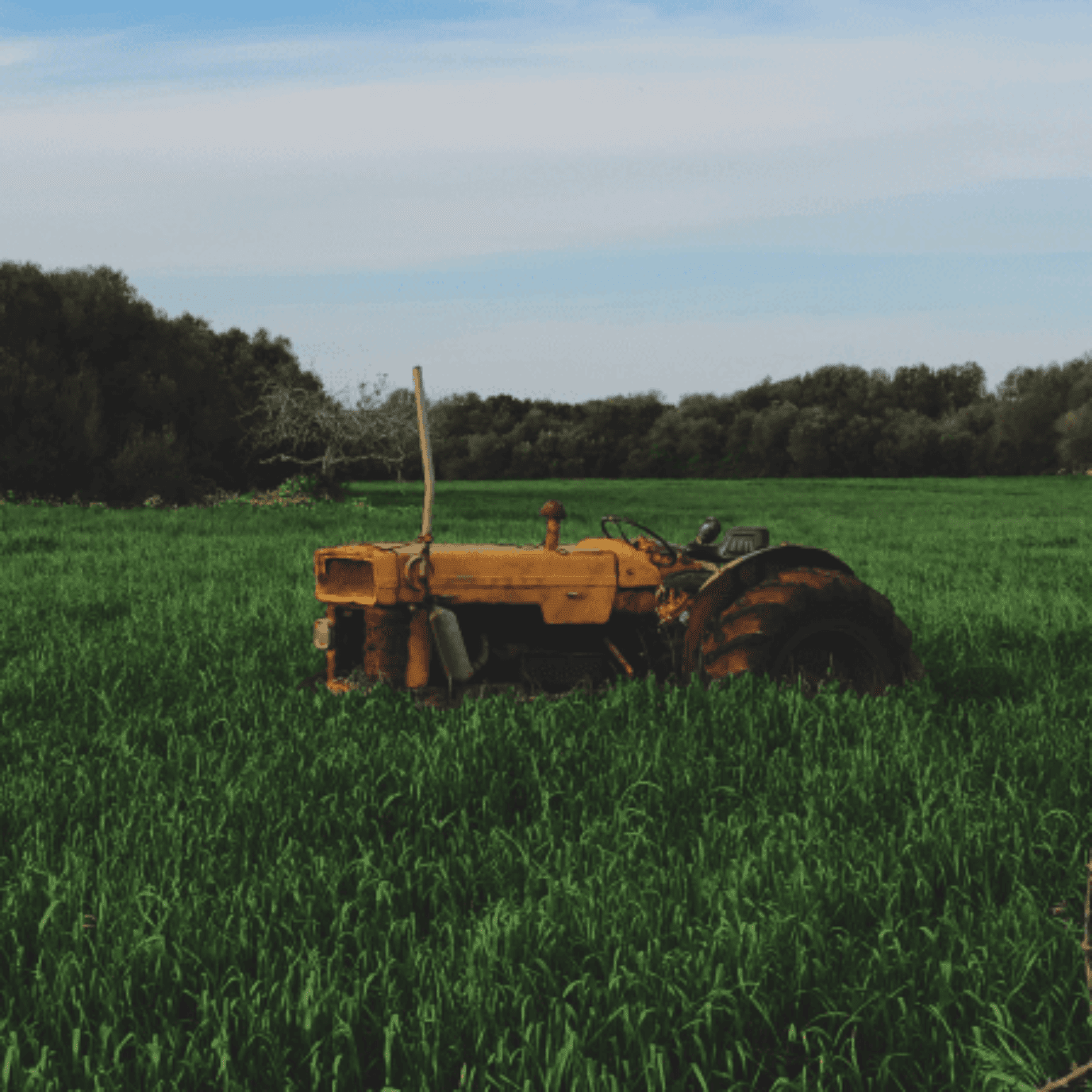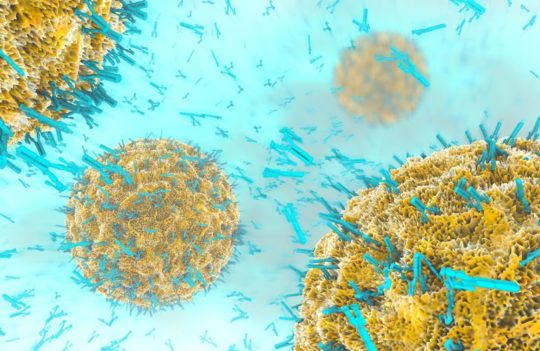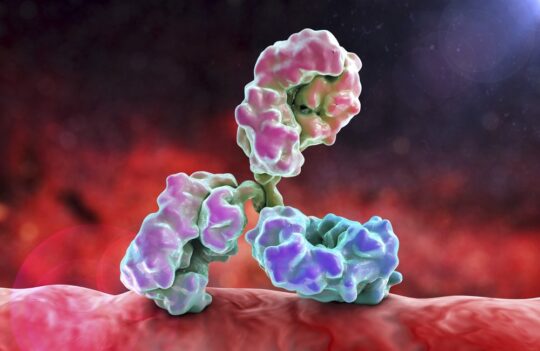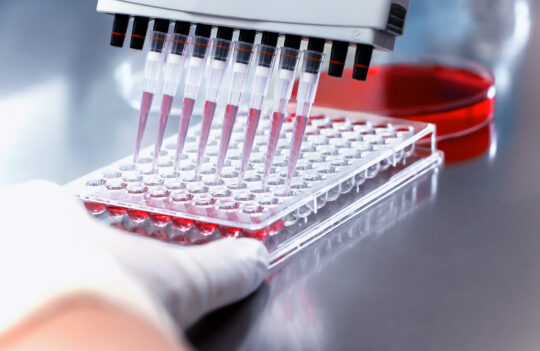 Antibody production
Antibody production
How monoclonal antibody development can help to reduce the risk of foodborne diseases
Foodborne illnesses continue to impose a heavy burden on human health worldwide. Thus, it is important to devise cost-effective strategies for the detection of foodborne pathogens and contaminants as early as possible in the supply chain. In this context, monoclonal antibody development has emerged as a cost-effective approach. In particular, methods of hybridoma generation for diagnostic applications continue to push the boundaries of sensitivity in food monitoring, in vitro tests, and medical devices. Hybridomas thus continue being used to mitigate the burden of these diseases on human health.
- What is the estimated burden of foodborne diseases?
- How monoclonal antibody development helps fighting the risk of foodborne contamination
- Benefits of using antibody-based methods for pathogen detection
- Challenges of monoclonal antibody development for the detection foodborne pathogens
- Concluding remarks
What is the estimated burden of foodborne diseases?
The rising world population has led to an inflated food demand. This increasing demand has shaped the development of intensive agriculture and animal husbandry practices, often with detrimental consequences for human and animal health.
In the US, more than 840 foodborne disease outbreaks, 14,481 affected patients and 20 deaths have been confirmed in 2017 alone. The vast majority of these illnesses were caused by human pathogens Salmonella spp., Norovirus, Listeria monocytogenes, and Clostridium botulinum.

Worldwide, data from the World Health Organization (WHO) is even more distressing. Globally, 1 in every 10 people (approximately 600 million people) fell ill every year due to the consumption of contaminated foods. At least 42,000 deaths have been confirmed, a great percentage of these were children below 5 years old (30 %). Norovirus, Campylobacter spp. and Salmonella spp. were found to be the main culprits for the growing burden of foodborne illness around the world. African and South-East Asian regions took the heaviest tolls.
These diseases can spread through the consumption of:
- Contaminated raw fruit and vegetables
- Ready-to-eat meals
- Processed meats
- Dairy products
- Smoked fish
- Soft cheese
How monoclonal antibody development helps fighting the risk of foodborne contamination
The link between the consumption of contaminated food supplies and the onset of foodborne illnesses is well established. Thus, it is of paramount importance to develop strategies to control and monitor the contamination of food supplies.
Conventional detection and monitoring methods are technically demanding and time-consuming. Thus, they are ill-adapted to the fast-paced requirements of the modern food industry.
Technical and scientific progress continues to reduce the cost of monoclonal antibody development. Hence, the use of these highly-sensitive and specific molecules is being regarded as a suitable alternative to conventional methods.
Benefits of using antibody-based methods for pathogen detection
The rapid detection and identification of pathogens and toxins are of paramount importance. These pathogens very often occur at very low abundances in food supplies. Thus, specificity and sensitivity should be optimized during the development of food monitoring tools.
The detection and identification of foodborne pathogens can be made using immunoassays. These assays can be designed to react to specific antigens such as capsular, flagellar and surface proteins, and pathogen-specific polysaccharides. However, the use of in vitro techniques or immunization with antigen conjugates has prompt the development of assays targeting even small molecules. Molecules, especially toxins, antibiotics or pesticides, which are also considered important emergent micropollutants and threats to human health, can now be detected using monoclonal antibodies.
However, the greatest opportunities lie in monoclonal antibody development for the detection of human pathogens. These bacterial pathogens are often hard to culture under standard laboratory conditions. Thus, the laborious and time-consuming culture-dependent methods can be replaced by the fast and specific antibody-based culture-independent methods.
For instance, immunoassays such as ELISA have been successfully applied for the detection of:
- Shiga toxin-producing Escherichia coli O157: H7
- Listeria monocytogenes
- Salmonella enterica
- Among other pathogens
Sandwich ELISA, which uses two antibodies to capture and detect the target antigen, has been one of the most successful formats used for the detection of low abundance pathogens in complex samples.
Different assays can also be combined in a single microarray slide. This parallelization allows the development of very fast procedures (sometimes under 15 minutes) for the coordinate detection of many different pathogens in the same sample.
Challenges of monoclonal antibody development for the detection foodborne pathogens
It is of the utmost importance to develop antibodies that are sensitive and highly specific towards foodborne pathogens. Many of these assays have been designed to capture and detect the entire microbial cell. But sometimes, the environmental conditions may compromise the specificity of these antibodies.
Osmotic shock, pH and temperature fluctuations and different matrixes (e.g. meat, fish, etc.) may influence the conformation and expression of a given antigen in the microbial pathogen. In these cases, many researchers suggest that the detection of specific proteins, toxins and even other compounds produced and secreted during the growth of the pathogen, may often offer better targets than the surface-bound compounds of the microbial cells themselves.
Concluding remarks
Immunoassays present a cost-effective and fast alternative for the detection of pathogens and toxins in food supplies. They can be designed for the parallel detection of multiple antigens in a single microarray slide. However, extensive prior validation of these assays is necessary to guarantee specificity across different samples and environmental conditions.
- Byrne, B. et al. Antibody-Based Sensors: Principles, Problems and Potential for Detection of Pathogens and Associated Toxins. Sensors (Basel). 2009; 9(6): 4407–4445. doi: 10.3390/s90604407
- Centers for Disease Control and Prevention. Available from: http://www.cdc.gov/features/foodborne-diseases-data/ Last accessed on September 2019
- Isanga, J. et al. Development of a specific monoclonal antibody assay and a rapid testing strip for the detection of apramycin residues in food samples. Food Agr Immunol. 2017; 28(1):49-66. doi: 10.1080/09540105.2016.1202211
- Samarajeewa, U. et al. Application of immunoassay in the food industry. Crit Rev Food Sci Nutr. 1991; 29(6):403-34. doi: 10.1080/10408399109527535
- Skinner, C. et al. Development of monoclonal antibodies and immunoassays for sensitive and specific detection of Shiga toxin Stx2f. PLoS One. 2013; 8(9):e76563. doi: 10.1371/journal.pone.0076563
- WHO Estimates of the Global Burden of Foodborne Diseases. 2015. Available from: https://www.who.int/foodsafety/publications/foodborne_disease/fergreport/en/ Last accessed on September 2019




